The striped dolphin is the most abundant dolphin species in the Mediterranean Sea. It is a small, active and energetic dolphin, usually seen swimming very fast in long, low arching leaps. The name comes from its characteristic lateral dark grey stripes that run from the beak, all along the entire body. A pale grey or white blaze extends towards the base of the dorsal fin like a brushstroke, while the dorsal cape is dark grey and the underside is withe or pinkish.
This small, streamlined oceanic dolphin has an average length of 2.1 m to 2.4 m and 100-150kg of weight.
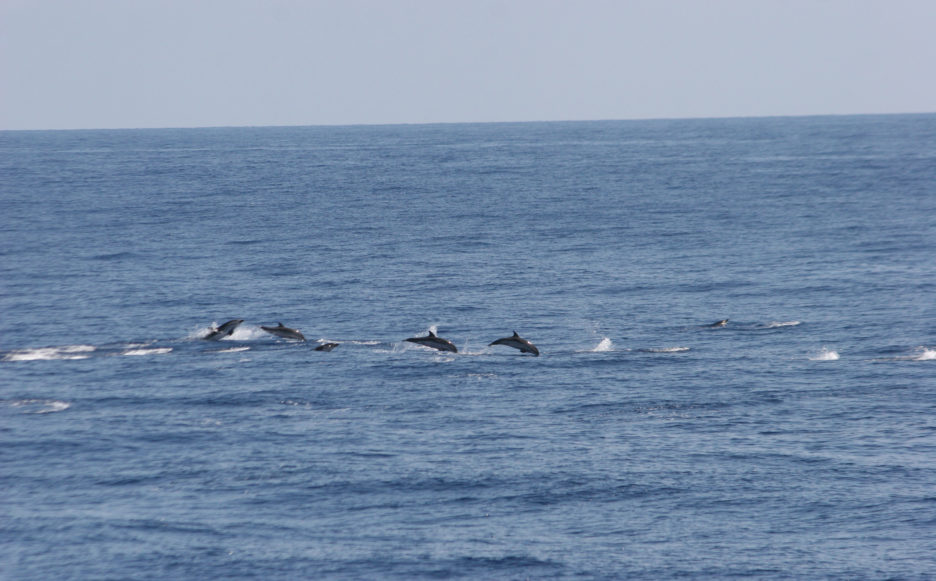
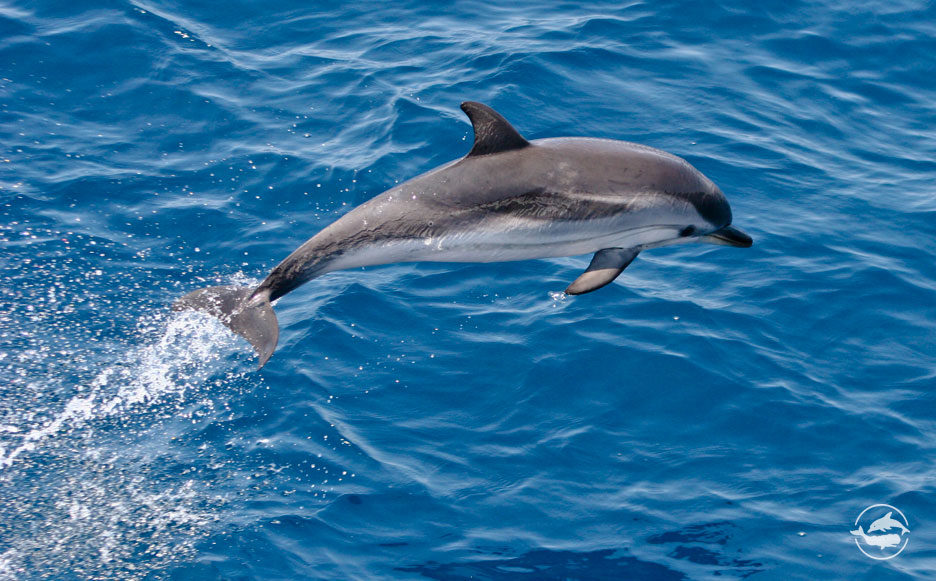
The striped dolphin is a carnivorous animal that feeds mainly on a variety of small fish, measuring 6 to 30 cm in length, squid and some crustaceans. The population of the Mediterranean Sea prefers small fish and cephalopods. The striped dolphin has an opportunistic feeding style and can look for its prey in any area of the water column. If necessary, it submerges to depths of 200 to 700 meters.
The striped dolphin groups in pods of 10 to 100 individuals organized by age, gender and reproduction status. It is a very active, energetic and extremely agile dolphin, frequently breaching up to 5 to 7 m high. A unique behaviour is called “roto-tailing”, a high arcing leap while vigorously whipping the tail in a circle before entering the water. Its communication is similar to the one of other dolphins, based on the emission of clicks, squeals, and whistles.
The lifespan of striped dolphins is over 50 years. Males become sexually mature at the age between 7 and 15 years, while females reach sexual maturity at 5 to 13 years. In other parts of the world, these animals usually mate in winter and summer months. Meanwhile, those in the Mediterranean region tend to mate in autumn. Females give birth approximately every 3 years and the gestation lasts 12-13 months.

The common bottlenose dolphin is most likely the best known of all cetaceans, figured in legends and being known since the ancient Greeks ...
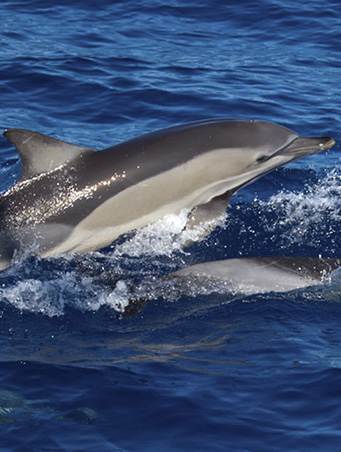
The short-beaked common dolphin is a medium-sized dolphin, easily distinguishable by a very unique hourglass-like pattern on the side of ...
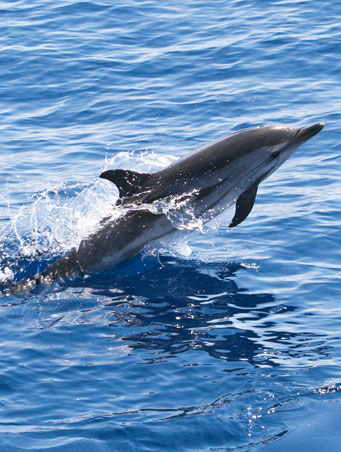
The striped dolphin is the most abundant dolphin species in the Mediterranean Sea. It is a small, active and energetic dolphin, usually s ...
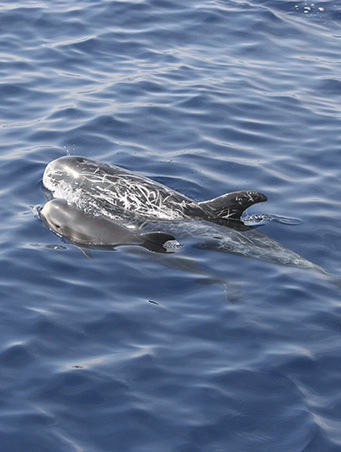
Risso’s dolphins are large members of the Delphinidae family, presenting a distinctive coloration that can vary throughout their ...
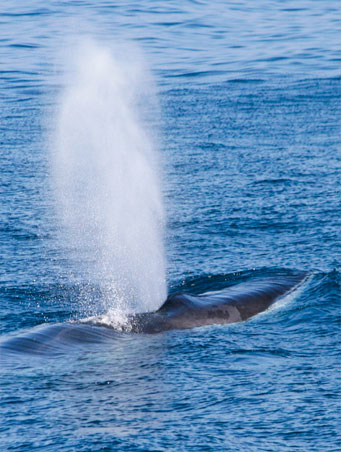
The fin whale is the second longest animal in the world, after the blue whale, reaching a length of 23 m and weighting up to 50 tons. The ...
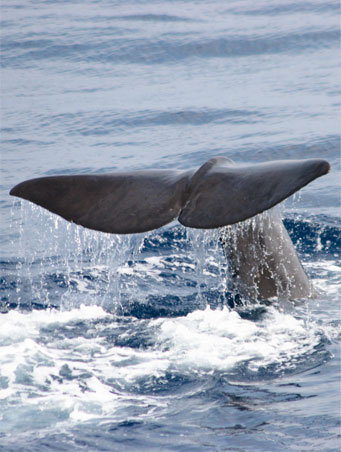
The sperm whale is easily recognisable by its massive heads which contains the spermaceti: the world’s most powerful natural sonar or ech ...